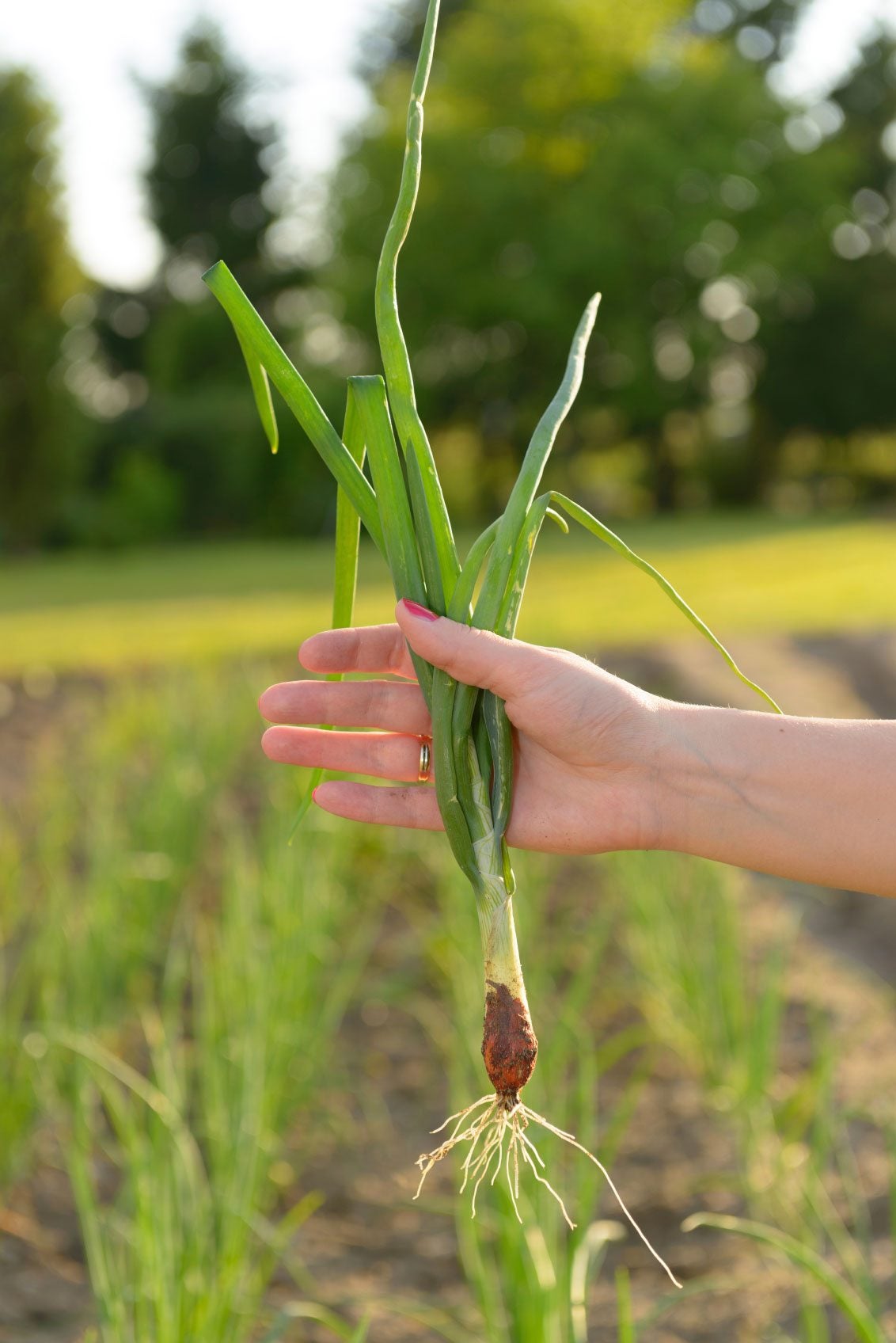Onion Bulb Formation: Why Onions Do Not Form Bulbs

Many onion varieties are available to the home gardener and most are relatively easy to grow. That said, onions do have their fair share of issues with onion bulb formation; either the onions don't form bulbs, or they may be small and/or misshapen.
Reasons for No Onion Bulbs
One possible reason for a lack of onion bulb formation is the selection of the wrong type of onion for your area. In their natural environment, onions are biennials that have a two-year life cycle. The first year, the plant bulbs and the second year it flowers. Cultivators of onions grow them as an annual and harvest at the end of the first growing season. Onions are categorized as “long day” or “short day” varieties, with some intermediate varieties available as well. The terms are in reference to the length of daylight during the growing season in a particular area.
- A “long day” onion variety quits forming leaves and begins to bulb when the length of daylight is 14-16 hours.
- “Short day” cultivars make bulbs much earlier in the season when daylight is only 10-12 hours long.
“Long day” onions should be planted north of the 40th parallel (San Francisco on the west coast and Washington D.C. on the east) while “short day” onions do best south of the 28th parallel (New Orleans, Miami). The newest kids on the block are the day neutral varieties of onion which can be planted without regard to latitude -- a big boon to gardeners between the 28th and 40th parallel. Bulb size is in direct correlation to the number and size of leaves (tops) of the onion at the time of bulb maturity. Each leaf corresponds to a ring of the onion and the larger the leaf, the larger the ring.
How to Get Onions to Form a Bulb
Choosing an appropriate onion variety for your region and following the correct planting time is an important factor in getting healthy onion bulbs to form. “Long day” varieties are planted in the early spring. Either start seeds indoors and transplant or plant onion sets directly outdoors. Note: When starting seeds indoors under a grow light, do so early, even 3-4 months, and start them in cells for stronger root development. Then transplant into the garden at the same depth as the plug so the bulbs form naturally at the correct height. “Short day” cultivars should be planted mid fall either directly sown or with onion sets. Grow onions in raised beds about 4 inches (10 cm.) high and 20 inches (50 cm.) across. Dig a 4-inch (10 cm.) trench in the bed and distribute a phosphorus rich fertilizer (10-20-10) 2 or 3 inches (5 to 7.5 cm.) below the transplants, cover with a couple of inches (5 cm.) of soil and plant the onion sets. Maintain some space between the plants, 1 inch (2.5 cm.) deep and 4 inches (10 cm.) apart. For direct sown onion, thinning is the key to bulb size. Obviously, if there isn't room to grow, you'll get onions that don't form adequate bulbs. Lastly, while this may not be directly related to a lack of bulbing, temperature will most certainly affect the size and quality of the onion. Cooler temps below 70 F. (21 C.) may retard bulbing in some varieties. In late spring, fluctuation between warm days alternating with cool days may cause the plant to bolt, or flower. Flowering in onions results in a lighter weight bulb with an increased risk of decay and a lower storage life.
Gardening tips, videos, info and more delivered right to your inbox!
Sign up for the Gardening Know How newsletter today and receive a free copy of our e-book "How to Grow Delicious Tomatoes".

Amy Grant has been gardening for 30 years and writing for 15. A professional chef and caterer, Amy's area of expertise is culinary gardening.
-
 Looking For Plants To Give You The Soft And Fuzzies? Try These 5 Fuzzy Leaf Plant Options
Looking For Plants To Give You The Soft And Fuzzies? Try These 5 Fuzzy Leaf Plant OptionsLovers of texture, drama, silver foliage and tactile plants will adore these special sensory garden additions. These fuzzy leaf plant options will leave you all aglow
By Susan Albert
-
 Get Ready For A Summer Of Hummers! Grow These Full Sun Hummingbird Plants and Flowers
Get Ready For A Summer Of Hummers! Grow These Full Sun Hummingbird Plants and FlowersIf you’re lucky enough to enjoy a sunny backyard, make sure you are maxing out on your pollinator opportunities and grow these full sun hummingbird plants and flowers
By Tonya Barnett